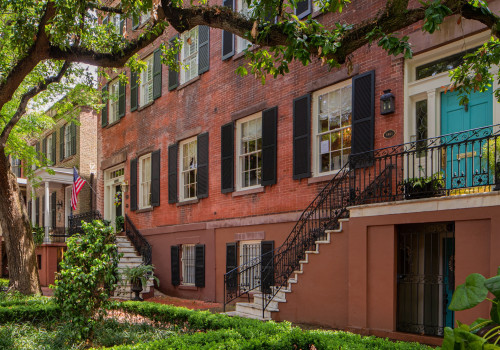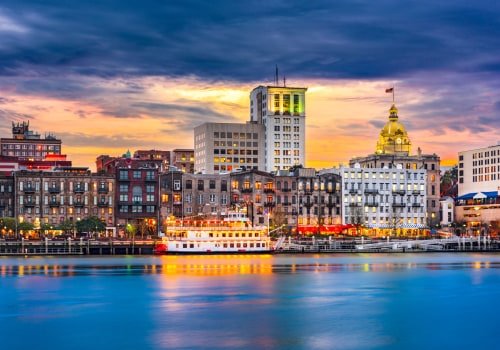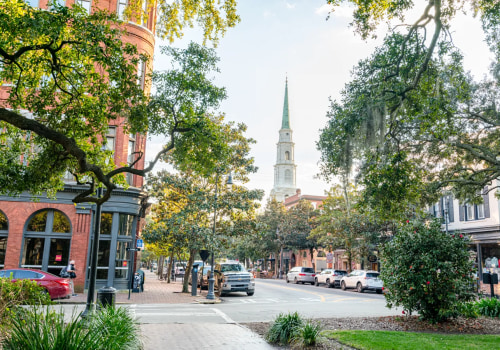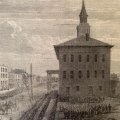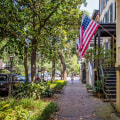James Edward Oglethorpe is credited with founding Georgia. The first group of British colonists landed at the site of the planned city, then known as Yamacraw Bluff, on the Savannah River, and Oglethorpe carried them sixteen miles inland from the Atlantic Ocean on February 12, 1733. Savannah is known as the first planned city in the United States. Oglethorpe distributed the city in a series of grids that allowed open streets to intertwine with shady public squares and parks that served as city meeting places and business centers. Savannah had 24 original seats; 22 seats still exist today in a day.
The Yamacraws, a Native American tribe, were the first known people to settle in and around Savannah. In the 18th century, under the command of their leader Tomochichi, they met the newly arrived European colonists. Sailing down the Savannah River, James Oglethorpe began his plan to colonize the area now known to the English as Savannah, Georgia. Savannah was the first planned city based on a grid system in the newly established colony from Georgia.
Savannah was founded along what is now the Savannah River in Yamacraw Bluff in 1733 by General James Oglethorpe as a debtor colony and a buffer colony between South Carolina and Florida. Savannah grew rapidly and became an important port for the sale of cotton. It also played a role in the War of Independence and again in the Civil War. Established in 1773, the state of Georgia was named after King George III of Great Britain.
Founded the same year, the city of Savannah was founded by British General James Oglethorpe. At the time, the entire city was made up of four squares that were originally intended to provide homes for settlers, community services, and ample space for military exercises. The grid-shaped city was strategically located on a bluff above the important Savannah River, which, at the time, constituted a water corridor from Savannah, Georgia, through South Carolina to North Carolina. For this reason, there are many early connections between the settlement of Savannah and Charleston that dictate parallels and similarities between Savannah, Georgia and its sister city, Charleston, South Carolina, in community development, the formation of primitive government, and historic architecture that can still be recognized today. Thanks to the friendship between Oglethorpe and Tomochici, Savannah was able to prosper unhindered by the war with the Native American tribes that marked the beginning of many of the first American colonies.
As the 19th century progressed, Savannah's population increased slightly and its wealth exponentially, but its position among the largest in U. Oglethorpe's Savannah Plan consisted of six interconnected districts built around central squares, with trust lots on the east and west sides of the squares for public buildings and churches, and tithing lots for private settler housing in the north and south sites. Between 1764 and 1773, Savannah exported the skins of 500,000 deer (2 million pounds), making the city an important commercial port on the South Atlantic coast. By then, Savannah, with vast yellow pine forests stretching to Georgia's coastal plain, had become the world's leading exporter of naval supplies. By 1870, three major railroads (Central of Georgia Railway, Savannah and Charleston, and Savannah and Gulf) connected the city to coastal and inland markets.
On February 5, 1958, during a training mission piloted by a B-47, a Mark 15 nuclear bomb, also known as a Tybee bomb, was lost off the coast of Tybee Island, near Savannah. Secondary roads were also located next to King's Road and connected plantations such as Wormsloe, home of Noble Jones, to the expanding and increasingly urban Savannah market. When Savannah saw the destruction Sherman was destined to inflict on her, she decided to welcome General Sherman with open arms. Riverside planters in Georgia and South Carolina shipped their cotton down the river for sale and export in Savannah.
The Savannah Cotton Bag was established in 1876 and established its permanent headquarters on Bay Street in 1883, with the stores further down River Street. The plan for Savannah was to offer a fresh start for England's working poor and to strengthen the colonies by increasing trade. That's the year that General James Oglethorpe and the 120 passengers of the good ship Anne disembarked on a cliff high above the Savannah River in February. The expansion of Savannah during the 1830s and 1840s led to the need for a new map of the city, published by Edward A.
At the end of the 19th century, factoring was in decline, as more and more planters sold their products in inland markets, so they simply shipped them from Savannah via the extensive railroad connections between the city and the interior. In December 1986, an oil tanker docked in the port of Savannah caused an oil spill that caused approximately 500,000 U.S. gallons (1,900,000 L) of fuel oil to leak into the Savannah River.

